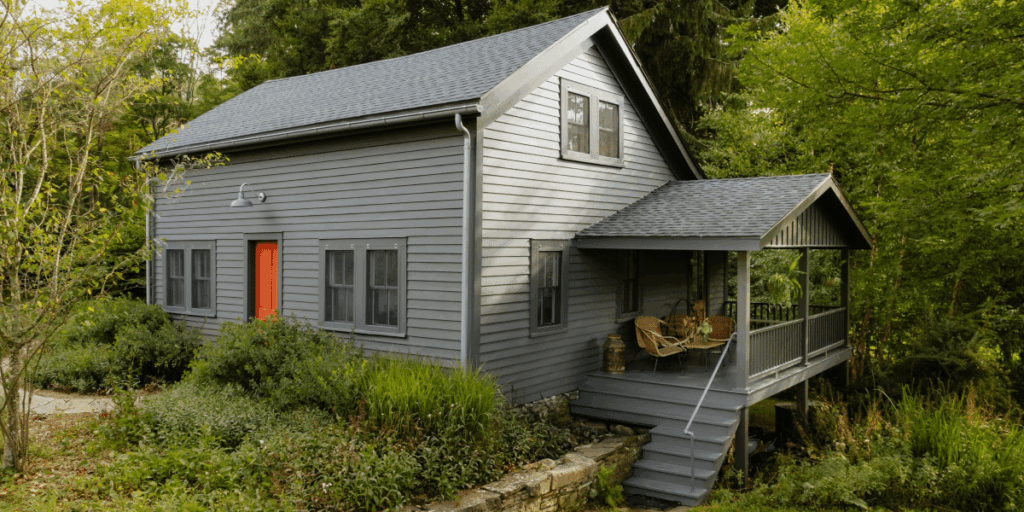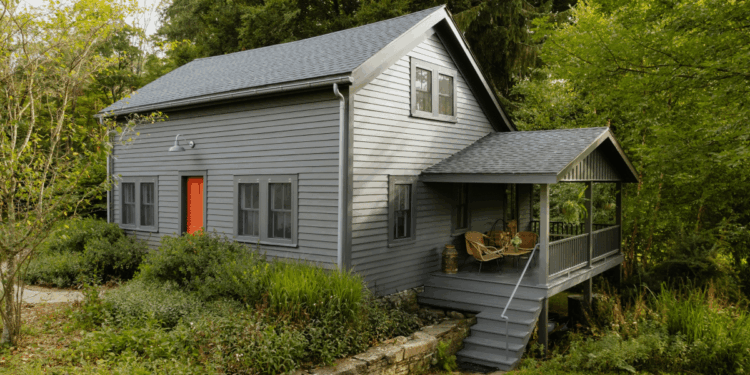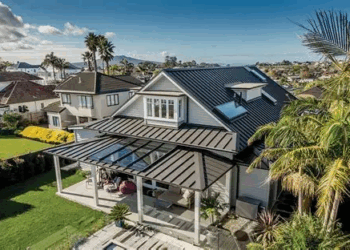
Exploring affordable home siding options opens up a world of possibilities for homeowners looking to enhance both the functionality and aesthetics of their properties. From cost-effective materials to installation methods, this guide delves into the key aspects to consider when revamping your home's exterior.
Types of Affordable Home Siding Options
When it comes to choosing siding materials for your home, affordability is a key factor to consider. There are several options available that are cost-effective and can enhance the appearance of your house while providing protection from the elements.
Vinyl Siding
Vinyl siding is one of the most popular choices for affordable home siding. It is low-maintenance, durable, and comes in a variety of colors and styles. However, it may not be as environmentally friendly as other options, and it can crack or fade over time.
Fiber Cement Siding
Fiber cement siding is another cost-effective option that offers the look of wood without the high maintenance. It is resistant to fire, insects, and rot, but it can be heavy and may require professional installation.
Engineered Wood Siding
Engineered wood siding is a more affordable alternative to traditional wood siding. It is made from wood fibers and resin, providing a natural look with added durability. However, it may require periodic painting or staining to maintain its appearance.
Metal Siding
Metal siding, such as aluminum or steel, is a budget-friendly option that is resistant to insects and rot. It is also fire-resistant and can last for many years with minimal maintenance. However, it can dent easily and may not provide the same level of insulation as other materials.
Comparing Durability and Maintenance
In terms of durability, fiber cement siding and metal siding are known to be long-lasting and low-maintenance options. Vinyl siding and engineered wood siding are also durable but may require more upkeep over time. It is essential to consider the climate and specific requirements of your home when choosing the most suitable and affordable siding material.
Factors to Consider When Choosing Affordable Home Siding
When selecting affordable home siding options, there are several factors to take into consideration to ensure you make the best choice for your property. These factors can impact the durability, energy efficiency, and overall aesthetics of your home.
Importance of Considering Climate
Climate plays a crucial role in determining the best siding material for your home. For example, in areas with high humidity, it's essential to choose siding that is resistant to moisture to prevent mold and mildew growth. In regions with extreme temperature variations, opt for siding materials that can withstand these fluctuations without warping or cracking.
Impact of Siding Color on Energy Efficiency
The color of your home siding can affect its energy efficiency. Light-colored siding reflects sunlight, helping to keep your home cool in the summer. On the other hand, dark-colored siding absorbs heat, making it ideal for colder climates to enhance warmth retention.
Consider the climate of your area and choose a siding color that will contribute to your home's energy efficiency.
Choosing Siding that Complements Aesthetics
While affordability is a significant factor, it's also crucial to select siding that enhances the overall look of your home. Choose a material and color that complements the architectural style and color scheme of your property
Installation Methods for Affordable Home Siding
When it comes to installing affordable home siding, there are different methods to consider. Whether you opt for a DIY approach or hire professionals, understanding the installation process is crucial for a successful outcome.
DIY Installation Process
- Prepare the surface: Ensure the walls are clean, dry, and free of any debris before starting the installation process.
- Measure and cut the siding: Take accurate measurements of the area to be covered and cut the siding panels accordingly.
- Install the siding: Begin at the bottom and work your way up, making sure each panel is securely attached to the wall.
- Seal and finish: Use appropriate sealants and finishing touches to ensure the siding is weatherproof and aesthetically pleasing.
Tools and Equipment Needed
- Hammer or nail gun: For securing the siding panels to the wall.
- Saw or cutting tool: To accurately cut the siding panels to fit the dimensions of the wall.
- Level and measuring tape: To ensure the siding is installed straight and according to the correct measurements.
- Sealant and caulk: To weatherproof the siding and prevent moisture infiltration.
Tips for Hiring Professionals
- Get multiple quotes: Compare prices from different contractors to ensure you are getting the best deal within your budget.
- Check references: Ask for references from past clients to gauge the quality of work and professionalism of the contractor.
- Set a timeline: Clearly communicate your expectations and timeline for the project to avoid any delays or misunderstandings.
- Ask about warranties: Inquire about warranties or guarantees on the work done to protect your investment in the long run.
Maintenance and Longevity of Affordable Siding
When it comes to affordable siding options for your home, proper maintenance is essential to ensure longevity and keep your exterior looking great for years to come. Each type of affordable siding material has specific maintenance requirements that can impact its durability and lifespan.
Maintenance Requirements for Different Types of Affordable Siding Materials
- Vinyl Siding: Vinyl siding is relatively low maintenance, requiring occasional cleaning with a mild detergent and water to remove dirt and grime. Inspect for any cracks or damage that may need repair.
- Fiber Cement Siding: Fiber cement siding should be inspected annually for any signs of damage, such as cracks or moisture intrusion. Repainting may be necessary every 5-10 years to maintain its appearance.
- Wood Siding: Wood siding requires regular maintenance, including staining or painting every few years to protect it from moisture and UV damage. Inspect for rot or insect damage regularly.
Proper Maintenance to Extend the Lifespan of Budget-Friendly Siding
- Regular Cleaning: Keeping your siding clean by washing it with a mixture of soap and water can prevent dirt buildup and mold growth, extending its lifespan.
- Inspect and Repair Promptly: Regularly inspect your siding for any damage or signs of wear, such as cracks, rot, or loose panels, and address them promptly to prevent further deterioration.
- Seal Gaps and Caulk Joints: Properly sealing gaps and caulking joints in your siding can prevent water infiltration and damage, improving its longevity.
Cost-Effective Ways to Repair and Maintain Affordable Siding Options
- DIY Repairs: Many minor repairs and maintenance tasks can be done yourself, such as replacing damaged panels, repainting, or cleaning, saving you money on professional services.
- Regular Inspections: By conducting regular inspections of your siding, you can catch any issues early on and address them before they escalate into costly repairs.
- Protective Coatings: Applying protective coatings or sealants to your siding can help prolong its lifespan and protect it from the elements, reducing the need for frequent repairs.
Final Thoughts
In conclusion, the realm of affordable home siding options offers a plethora of choices for homeowners seeking durability, style, and cost-effectiveness. By understanding the types of materials, factors to consider, installation methods, and maintenance tips, you can make an informed decision that elevates the look and value of your home.
FAQs
What are the most common types of affordable home siding materials?
Common types include vinyl, fiber cement, and engineered wood siding, each offering a unique balance of cost and durability.
How can siding color impact energy efficiency?
Lighter colors reflect heat, keeping homes cooler in warm climates, while darker colors absorb heat and are ideal for colder regions.
What are some cost-effective ways to repair and maintain affordable siding options?
Regular cleaning, addressing minor damages promptly, and applying protective coatings can help extend the lifespan of affordable siding without breaking the bank.













